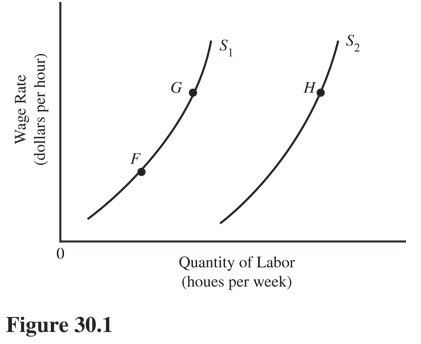 In Figure 30.1, the shift in the labor supply curve from S1 to S2 means that
In Figure 30.1, the shift in the labor supply curve from S1 to S2 means that
A. The marginal utility of labor relative to leisure has increased.
B. The demand for labor has increased, and this encourages more labor force participation.
C. The marginal utility of labor has decreased.
D. Workers are being paid higher wage rates, given their taste for work.
Answer: A
You might also like to view...
When firms have market power, it means that they:
A. can noticeably affect the market price. B. have no control over the market price. C. can noticeably affect the market quantity available for sale. D. do not noticeably affect the market quantity offered for sale.
Suppose a firm is a price searcher in the product market and hires labor in a perfectly competitive labor market. If the wage rate is $20, the marginal product of the last worker hired is 5, and the firm is hiring the profit-maximizing amount of labor, then the marginal revenue from the last unit of output must be
a. $1 b. $1.50 c. $4 d. $5 e. $20
When theaters charge lower prices for matinee showing, it is not price discrimination, since it is more expensive to operate a theater during the day, as compared to the evening hours.
Answer the following statement true (T) or false (F)
An appreciation of the U.S. dollar relative to the Japanese yen causes
A) a lower dollar-price of Japanese goods which induces the U.S. to increase their purchasing of Japanese goods. B) the quantity demanded of U.S. dollars to increase because the Japanese want to buy more U.S. goods. C) the Japanese to buy more U.S. goods, causing the dollars to appreciate further. D) the U.S. to buy less Japanese goods, causing the U.S. to depreciate.